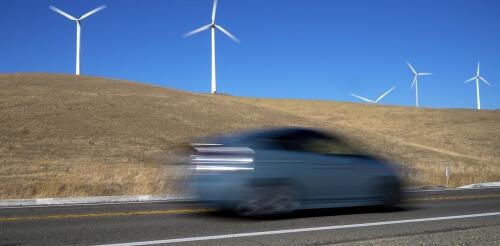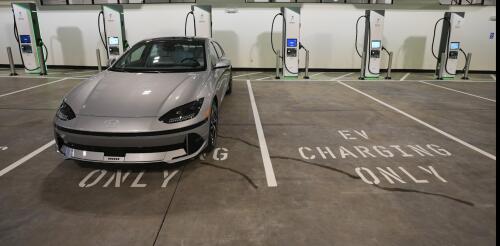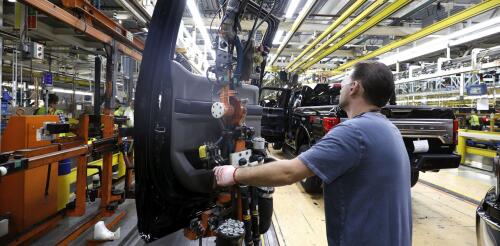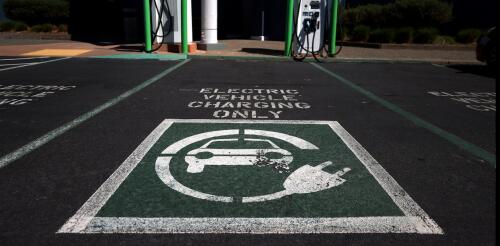Auto industry
In June 2019, then-presidential candidate Joe Biden tweeted: “Trump doesn’t get the basics. He thinks his tariffs are being paid by China. Any freshman econ student could tell you that the American people are paying his tariffs.” Fast-forward five years to May 2024, and President Biden has announced a hike in tariffs on a variety of Chinese imports, including a 100% tariff that would significantly increase the price of Chinese-made electric vehicles. For a nation committed to reducing greenhouse gas emissions, efforts by the U.S. to block low-cost EVs might seem counterproductive. At a price of around US$12,000, Chinese automaker BYD’s Seagull electric car could quickly expand EV sales if it landed at that price in the U.S., where the cheapest new electric cars cost nearly three times more. As an expert in global supply chains, however, I believe the Biden tariffs can succeed in giving the U.S. EV industry room to grow. Without the tariffs, U.S. auto sa...
Panasonic’s new US$4 billion battery factory in De Soto, Kansas, is designed to be a model of sustainability – it’s an all-electric factory with no need for a smokestack. When finished, it will cover the size of 48 football fields, employ 4,000 people and produce enough advanced batteries to supply half a million electric cars per year. But there’s a catch, and it’s a big one. While the factory will run on wind and solar power much of the time, renewables supplied only 34% of the local utility Evergy’s electricity in 2023. In much of the U.S., fossil fuels still play a key role in meeting power demand. In fact, Evergy has asked permission to extend the life of an old coal-fired power plant to meet growing demand, including from the battery factory. With my students at Wellesley College, I’ve been tracking the boom in investments in clean energy manufacturing and how those projects – including battery, solar panel and wind turbine...
The U.S. Environmental Protection Agency released strict new emissions limits on March 20, 2024, for cars built from 2027 through 2032. The final rule for Multi-Pollutant Emissions Standards caps a process that started almost a year earlier, when the Biden administration first proposed groundbreaking regulations that would essentially require automakers to make a substantial pivot toward electrification. The original proposal met significant pushback from carmakers and unions, who argued that the industry needed more time to switch from gas-powered cars to EVs. As a result, while the final target that this rule sets is very similar to the one that was initially proposed, the timetable in the final rule – especially in the earlier years – is relatively relaxed. That means more carbon emissions in the short run. Politics is inevitably an important consideration in regulating major industries. The new rule is projected to cut carbon dioxide emissions from passenger ca...
Ballot counting is underway in a runoff election to decide who will lead the powerful United Auto Workers union as its president. But the historic election is already transforming the union’s leadership in ways that could bring an end to decades of declining blue-collar compensation in this key sector of the economy. This was the first direct leadership election in the UAW’s 88-year history, following a series of corruption scandals that sent two former presidents to prison. With most of the other leadership races already determined, it’s clear that the union’s leadership will be closely divided between the old guard and the challengers. This transformation of how the UAW is governed sets up what is widely expected to be a more adversarial relationship between the union and the Big Three domestic car producers. Regardless of who wins the presidency, a more combative stance with automakers is likely to result in more strikes, higher car prices and also gre...
The race to decarbonize passenger cars and light-duty trucks in the U.S. is accelerating. Battery electric vehicles accounted for almost 6% of all new vehicle sales in 2022, up from close to 3% in 2021, and demand is outstripping supply, even as manufacturers roll out new models and designs. The Biden administration is spending billions of dollars to build out EV charging networks and providing incentives for purchasing new and used EVs. This shift offers big economic and environmental benefits, but they’re not spread equitably. People who bear the most burdens in our current transportation systems often receive the fewest benefits, and are least able to change their situations. I study the future of clean transportation and energy, and my research analyzes equity considerations in the design of these systems. As my colleagues and I see it, an equitable transition will require thinking broadly about all transportation users and their needs – especially those who are...




